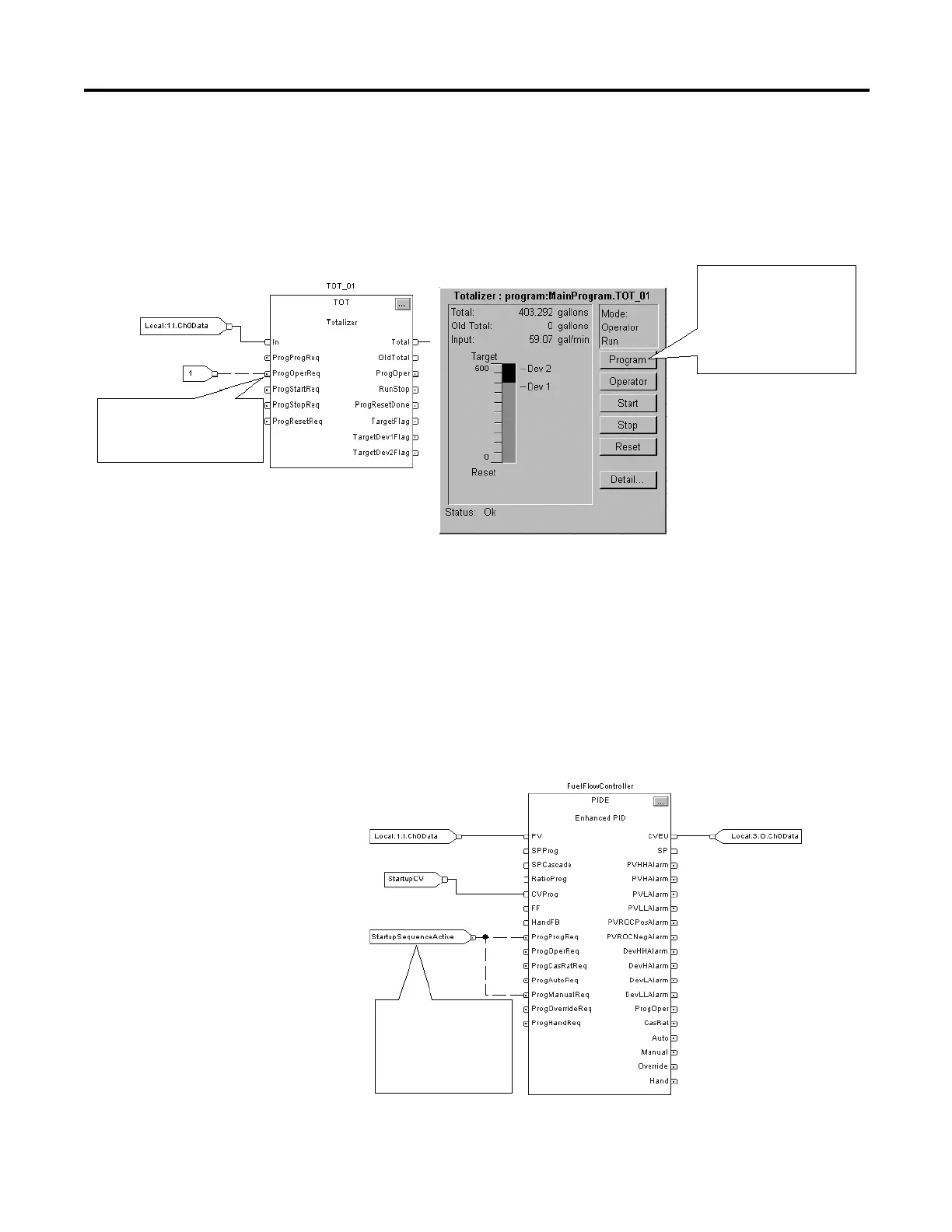Rockwell Automation Publication 1756-RM003N-EN-P - October 2011 667
Function Block Attributes Appendix B
For example, let’s assume that a Totalizer instruction will always be used in
Operator control, and your user program will never control the running or
stopping of the Totalizer. In this case, you could wire a literal value of 1 into the
ProgOperReq. This would prevent the operator from ever putting the Totalizer
into Program control by setting the OperProgReq from an operator interface
device.
Likewise, constantly setting the ProgProgReq can ‘lock’ the instruction into
Program control. This is useful for automatic startup sequences when you want
the program to control the action of the instruction without worrying about an
operator inadvertently taking control of the instruction.
In this example, you have the program set the ProgProgReq input during the
startup, and then clear the ProgProgReq input once the startup was complete.
Once the ProgProgReq input is cleared, the instruction remains in Program
control until it receives a request to change. For example, the operator could set
the OperOperReq input from a faceplate to take over control of that instruction.
The following example shows how to lock an instruction into Program control.
Because the ProgOperReq input is
always set, pressing the “Program”
button on the faceplate (which sets
the OperProgReg input) has no effect.
Normally, setting OperProgReq puts
the TOT in Program control.
Wiring a ‘1’ into ProgOperReq means
the user program always wants the
TOT to be in Operator control
When StartupSequenceActive
is set, the PIDE instruction is
placed in Program control and
Manual mode. The StartupCV
value is used as the loop output.
